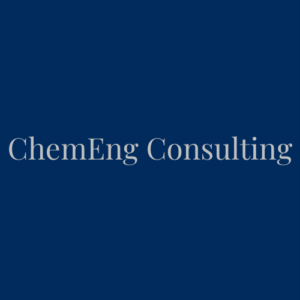Global Surfactants Market: Analyzing Rapid Growth Drivers and Sustainability Trends
The global surfactants market has demonstrated remarkable resilience and growth over the past decade, with current valuations exceeding $45 billion and projections indicating a compound annual growth rate (CAGR) of 5.3% through 2028. This expansion is being fueled by multiple factors, from increasing industrial applications to evolving consumer preferences for eco-friendly formulations. This analysis examines the key drivers behind this surge and explores the sustainability initiatives reshaping the industry landscape.
Key Market Drivers: Beyond Traditional Applications
Surfactants (surface active agents) continue to be indispensable chemicals in modern formulations, with their ability to reduce surface tension between liquids or between a liquid and a solid making them essential across multiple sectors. Several factors are contributing to the current market acceleration:
1. Household and Industrial Detergent Expansion
The household cleaning sector remains the dominant application segment, accounting for approximately 56% of global surfactant consumption. This dominance stems from:
- Rising urban populations with increased purchasing power in developing economies
- Growing awareness of hygiene protocols post-pandemic
- Technical advancements enabling multi-functional cleaning formulations
Market data indicates that anionic surfactants continue to lead this segment with a 40% market share, though non-ionic variants are gaining ground due to their lower environmental impact profiles and performance in cold-water applications.
2. Personal Care Product Innovations
The personal care segment represents the fastest-growing application sector for surfactants, with a projected CAGR of 6.2% through 2028. This growth is being driven by:
- Premiumization trends in skincare and haircare formulations
- Increasing consumer demand for mild, naturally-derived surfactants
- Expansion of the men’s grooming sector in previously untapped markets
Amphoteric surfactants, particularly betaines and amino acid-based derivatives, are witnessing substantial growth in this segment due to their skin compatibility and multi-functional properties.
3. Industrial Processing Advancements
Beyond consumer applications, industrial utilization of surfactants continues to expand in:
- Oilfield chemicals (enhanced oil recovery operations)
- Agricultural formulations (pesticide and herbicide delivery systems)
- Food processing (emulsification and stabilization)
- Textile processing (scouring agents and fabric conditioners)
The industrial sector has seen particular growth in specialty surfactants designed for extreme conditions, with silicone surfactants and fluorosurfactants commanding premium pricing despite regulatory challenges.
Regional Market Dynamics: Asia-Pacific Dominance
The Asia-Pacific region continues to dominate the global surfactants landscape, accounting for over 40% of consumption and production capacity. This dominance is attributed to:
- China’s continued expansion of domestic manufacturing capacity
- India’s rapidly growing middle class with increasing disposable income
- Strategic investments in surfactant production throughout Southeast Asia
Meanwhile, mature markets in North America and Europe are focusing on value-added specialty surfactants with improved environmental profiles, commanding higher margins while maintaining stable volume growth.
Sustainability: Redefining Product Development
Perhaps the most significant driver reshaping the surfactants market is the industry-wide push toward sustainability. This transition is manifesting in several ways:
1. Bio-based Raw Material Adoption
The shift toward renewable feedstocks continues to accelerate, with bio-based surfactants now representing approximately 25% of the global market. This transition is supported by:
- Increased availability of cost-competitive plant-derived fatty alcohols and acids
- Technological advancements in fermentation-based production methods
- Growing consumer preference for naturally-derived ingredients
Market data indicates that alkyl polyglucosides (APGs) and methyl ester sulfonates (MES) are experiencing double-digit growth rates, outpacing traditional petroleum-derived alternatives.
2. Improved Environmental Profiles
Beyond renewable sourcing, formulators are prioritizing biodegradability and reduced aquatic toxicity through:
- Development of readily biodegradable surfactant structures
- Reduction of 1,4-dioxane and other concerning by-products
- Optimization of surfactant efficiency to reduce usage volumes
The REACH regulation in Europe and similar regulatory frameworks globally continue to influence formulation decisions, with quaternary ammonium compounds facing increased scrutiny.
3. Circular Economy Initiatives
Forward-thinking manufacturers are implementing closed-loop systems for surfactant production, including:
- Recycling process water and recovering co-products
- Utilizing agricultural waste streams as feedstock
- Implementing carbon capture technologies at production facilities
These initiatives not only improve environmental metrics but often deliver cost advantages that maintain competitiveness against less sustainable alternatives.
Market Challenges and Future Outlook
Despite positive growth trajectories, the surfactants market faces several challenges:
- Raw material price volatility, particularly for palm oil derivatives
- Regulatory fragmentation across global markets
- Technical performance gaps in some bio-based alternatives
- Increasing consumer scrutiny of ingredient safety and environmental impact
Industry consolidation continues, with recent acquisitions focusing on securing innovative technology platforms rather than merely expanding production capacity. This trend suggests larger chemical conglomerates recognize the strategic importance of surfactant technology in their broader portfolios.
Conclusion: Sustainability as the Path Forward
The global surfactants market stands at an inflection point where traditional growth drivers are being complemented by sustainability imperatives. For chemical consultants advising clients in this space, the most valuable recommendations will balance immediate performance requirements with long-term sustainability positioning.
Market leaders are increasingly those who can document comprehensive sustainability metrics beyond simple renewable content percentages. The next generation of surfactant technology will likely focus on functionality derived from molecular design precision rather than brute-force concentration—delivering more with less while minimizing environmental footprint.
As consumer goods companies continue to pursue ambitious sustainability targets, surfactant suppliers positioned as solution providers rather than mere chemical vendors will capture disproportionate value in this evolving market landscape.
